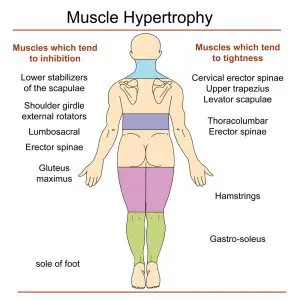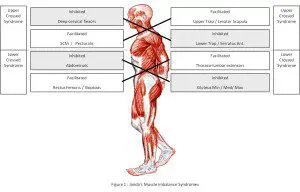Neck Injuries with Kettlebells? Fix Your Gaze / Fix Your Swing.
Neck Injuries with Kettlebells? Fix Your Gaze / Fix Your Swing.
Whatever modest success that I have had as a kettlebell competitor is due to the quality of my coaches. One of which is the current Guiness World Record holder for the hour long cycle and multiple Master of Sport in IKFF, the other is her coach, is the lead instructor for the Crossfit Kettlebell certification process and is an accomplished kettlebell athlete himself. If you find yourself lucky enough to receive their direct coaching and cues, do as you’re told. The results will follow. Their technique requires no external validation but I’ll provide it just the same.
Zach, Roo, their affiliate coaches and their interns teach the kettlebell swing as an integrated athletic movement. I will not endeavor to define the entire sequence. The purpose of this post is to explain one fact: We fix our gaze on a fixed point as we snatch and as we swing. Our necks are relaxed. The gaze is fixed on a single point allowing the torso and thoracic spine to rotate around it. The result is a smooth and subtle cervical extension at the bottom of the swing and a relative mild flexion at the lockout at the top of a kb snatch.
Here’s an example of the subtle cervical motion that I am describing. This short clip was taken at my last competition. This is how I was taught to move. Please notice that I fix my gaze on a spot on the floor about 8′ in front of me. Notice how I do not swing my gaze up and down with the bell as though I’m holding an orange or some other citrus fruit under my chin. I do not move my neck. Rather, my head is fixed and my body moves around me.
The reason that we move this way is simple and intuitive. We fix our gaze because it is the safest and most efficient way to move. Mild relative cervical motion occurs at the bottom of the swing for the same reason that a swimmer’s fixed neck rotates during a freestlye stroke relative to her rotating upper body. When you fix your gaze, you are not extending or moving your neck and head but relative extension does occur. A mildly extended neck position when not weight bearing is not dangerous or inefficient. It is a primal position hard wired into our neurology from our most primitive locomotor patterns. Watch a person move for the first time. What default cervical position does a baby adapt as it crawls?
The alternative to this relaxed and intuitive strategy is fixing the head as though holding a tennis ball under the chin and sweeping the head and gaze from floor to wall in each swing. This alternative approach is so stiff, unathletic and dysfunctional, that you need only try it to realize that it is a poorly thought out idea. Just for fun and to drive home the point, I’ll break down a brief argument into three categories: Safety, Performance, and Biomechanics.
Safety
The kettlebell swing is not a weight bearing neck exercise. It is an explosive hip movement. It is a jump where your feet never leave the ground. In the kettlebell swing the neck is not weight bearing. There is no more risk of a compressive extension injury while extending the neck a few degrees at the base of a kettlebell swing as there is looking up at a basketball before jumping for a rebound.
If you are recovering from a neck injury that is so inflamed that the mild relative motion involved in the proper mechanics of a swing is causing pain and inflammation, you need to put swings on the shelf for a couple weeks, get an assessment, some treatment, heal up and get back to the bell when you’re ready. It is better to peel back to a regression movement rather than defile your technique and stubbornly push through with stiff necked kettlebell swings.
Q- Ok it’s safe, but is fixing the gaze an effective way to stabilize and use the spine and has this been proven?
A- Yes it is. And Yes, it has.
Performance
Gabriele Wulf is a professor at the University of Nevada. She has published and impressive volume of studies over the past decade exploring the importance of fixing the gaze on an object and it’s effect on efficiency of movement and athletic performance. Her colleagues and she refer to it as “external fixation” or “attentional focus” and have proven time and time again that gaze fixation improves measureable markers of athletic performance in everything from muscular recruitment, to throwing darts, to juggling.
In 2007 she and her colleagues analyzed in a published controlled study the effect of fixing the gaze upon a target in the vertical jump test. As I described before, the hip extension of a kb swing or snatch closely matches that of the mechanics of a vertical jump. This is as good a study as we can ever hope to find on this topic. In fact it exceeds the expectation that I had when I began researching this article. In her study, she had uninstructed control groups to simply jump as high as they were able using whatever strategy they felt was most effective. Those participants were then instructed to fix their gaze upon the vertical target (mild cervical extension and gaze fixation- sounds familiar right?) and attempt again. Their vertical jump and center of mass height improved measurably and significantly (1.0 cm improvement on average) compared to controls. If you have the time, please read the linked out studies. The case is closed on performance. Thanks for playing. We could skip to my a conclusion from here, but I’ve got one more thing on my mind so bear with me for another paragraph or two.
Biomechanics
Some have mistakenly referenced the Joint By Joint model of movement to rationalize striving for a fixed neck/ cervical region. The Joint by joint model is adapted from Janda’s Layer Syndrome as pictured below. It describes a common biomechanical fault of stiff/ hypertonic neck and upper back. This is not an ideal to be aspired for. This is a pathological presentation. These stable/hypertonic areas require mobility. When these imbalances or not addressed, the result is the Upper and Lower Crossed Syndromes also pictured below. These models, when understood and applied correctly, would actually support increased cervical mobility which is achieved with the fixed gaze, mobile cervical style of swing as taught by my coaches and most of the serious coaches in the kettlebell world.
In fact, fixing the treatment area and creating relative motion at that segment by moving the body around it is often THE most effective way to rehabilitate, activate and treat the neck. Examples of this style of mobility include the Turkish Get-Up and Baby Get-Up for shoulder and glute medius rehabilitation. The days of clam shell exercises and banded external rotation exercises are behind us. If corrective exercise is to have a lasting effect, it must be integrated and functional.
Conclusion:
Holding a tennis ball, large orange or grapefruit under your chin while exercising is not entirely useless. Grapefruit is high in citrus bioflavonoids which help in the healing process and will prevent scurvy. If you are holding a grapefruit under your chin while you kettlebell, please remove it and eat it. Don’t worry about “breaking your canister” by fixing your gaze. Athletes’ necks move when they kettlebell swing, when they swim, and when they jump. Attempting to swing your gaze from the floor to the wall with a stiff neck will not make you safe, nor will it make you effective. When you swing a bell, lock your spine into a rigid lever, fire your hips into extension, and allow your neck to relax and respond naturally.
About the Author:
Dr. Pond holds the rank of IKFF Elite Level Sprinter which he earned at this year’s Northwest Kettlebell Championships in the #70 snatch division.


